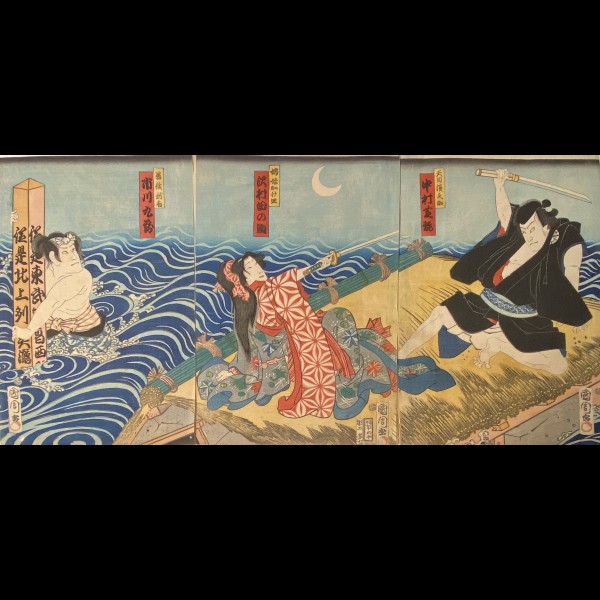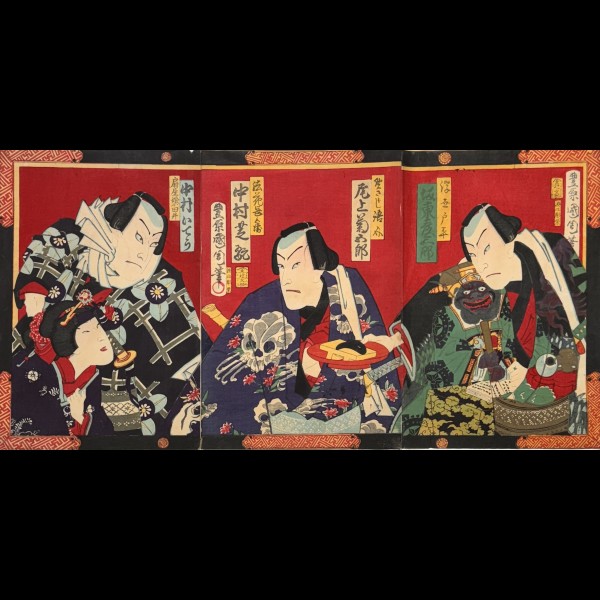KUNICHIKA TOYOHARA (1835–1900)
SCENE DE KABUKI
The actors Ichikawa Kuzo in the role of Wakasa Shinkichi, Sawamura Tanosuke in the role of Ane-Musume Kakesara and Nakamura Shikan in the role of Temmoku Sunosuke.Triptych formerly mounted, two small holes in the bottom of the left board, very fresh colors. Oban , nishiki-e1865..
580.00 €
QUATRE ACTEURS DU KABUKI
Piece: Mureire tazu yayoi no sogagiku1874Beautiful triptych in very fresh colors representing one of the actors wearing a kimono with skulls.Previously mounted leaves, two small losses, one in the left outer border, the other in the upper left margin, a few soft handling folds.ObanNishiki-eKunichika's success continued throughout the Meiji era. In 1874, the magazine Shinbun hentai wrote: "Color woodblock prints are one of the specialties of Tokyo and Kyōsai, Yoshitoshi, Yoshiiku, Kunichika and Ginkō are experts in this field." His contemporaries agreed that in Utagawa school: "Yoshitoshi was the specialist in impressions of warriors, Kunichika the wood engraver known for his portraits of actors and Chikanobu for court ladies. He also distinguished himself by the skillful use of color". Most artists of the time, he used strong reds and dark purples, often as background colors, rather than the softer colors used until then. These new colors were made of aniline, an imported dye. of Germany during the Meiji era (To the Japanese, the color red signifies progress and awakening in the new era of Western-style progress.)..
650.00 €
SAWAMURA TANOSUKE
Representation of the tattooed Kabuki actor.Light soiling.Nishiki-eObanMeiji period print..
200.00 €



